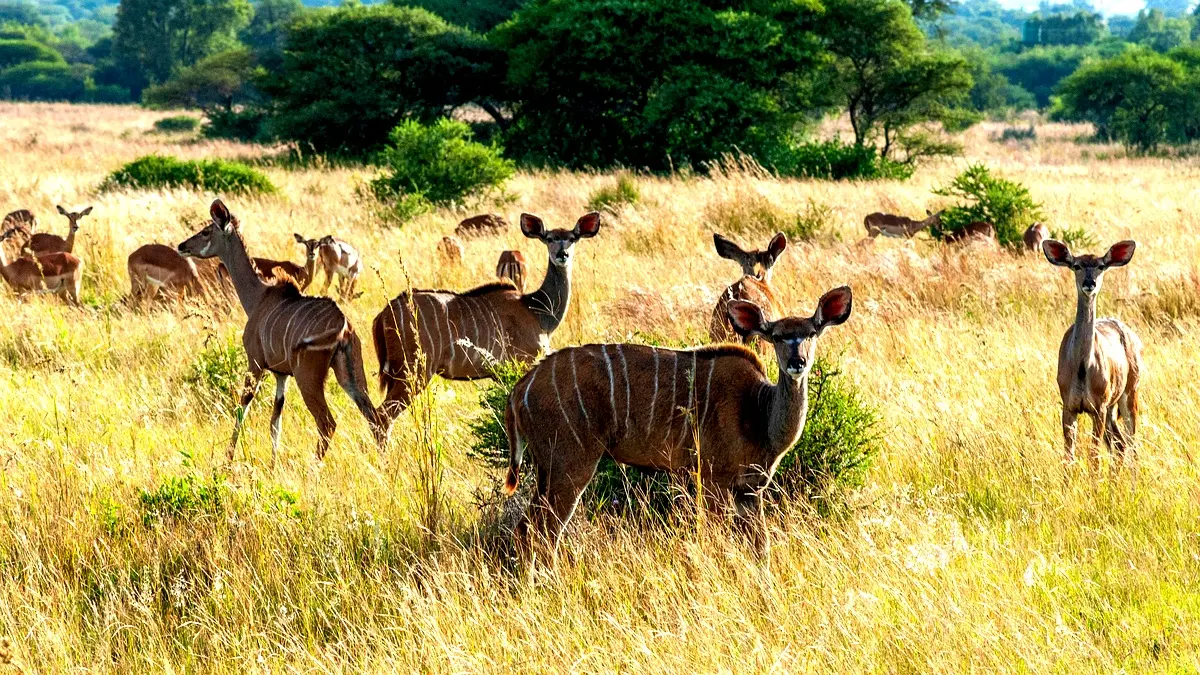What implementation strategies for conservation can effectively combat poaching in Kahuzi-Biega National Park? This study uncovers alarming trends in illegal activities from 2014 to 2018, revealing critical insights into the socio-economic factors driving biodiversity loss and offering actionable recommendations for sustainable protection.
CHAPTER FIVE: CONCLUSION AND RECOMMENDATIONS
Introduction
Kahuzi-Biega National Park is not fully protected against poaching activities. Forms of anti poaching support given to the management of KBNP by host communities are pretentious and done out of fear of not attracting the wrath of the federal government of DRC, which could lead to the removal of community leaders. If the security situation of the park is not improved, most of the resources of Kahuzi-Biega National Park will vanish from existence.
The rangers should be encouraged to be more committed with anti poaching activities through provision of attractive risk allowances and monitoring.
Conclusions
The aim of the study was to assess the poaching activities in Kahuzi-Biega National Park.
The results showed that there many illegal activities in KBNP include mining, hunting, tree cutting, agriculture, do carpentry of trees: wooden bowl, mortar and pestle and timber or wood, bushfire, honey collection, shepherd to pasture or grazing, bamboo cutting, encroachment, traditional medicine collection, to make the cows and goats to cross the parks without the cars, and so on.
Furthermore, the study showed the impacts that KBNP face caused by those illegal activities from 30 years ago because there are some employees who worked there in those years. So, there some extinct animals like elephant in the high altitude, the result showed that the last one was killed in 2014 by hunters.

In this study, the result from respondents showed how Kahuzi-Biega National Park should be conserved sustainably, they propose some solutions including the sensitization to the local communities who are near the park, by showing them the importance of the park, to make them understand how there are many services that KBNP produces for their interest like foreign money, water, air; increasing the punishment and create the specific law offenders and appropriate law of punishing the poachers, to increase the number of park rangers at each patrol post and provide them all possible field materials, the involvement of the central and local government in law enforcement and by providing salary to the park staff and park rangers; also the involvement of all stakeholders is crucial.
Recommendations
According to this study, the researcher has given recommendations to different agents for what they can do in order to minimize poaching activities and their possible impacts in KBNP. Those agents are; Local population, Local leaders, Park Management and Future researchers.
Recommendations to local populations
- To raise livestock for help them to find meat for eating to local people who enter into NNP for searching the meat to eat.
- To create the cooperative that will bring them the profits.
Recommendations to local leaders
- Encourage local communities to plant trees so they do not seek refuge in the park in search of firewood, timber and others;
- To encourage family planning policy by educating families to give birth to children who are able to survive without going into NNP to search for the livelihood.
- To encourage community to work together to share their collective experiences and indigenous knowledge of NNP.
- To strengthen the role of local communities and their involvement in KBNP management.
Recommendations the park management
- To enable communities to find the possibilities of getting income to reduce pressure on Kahuzi-Biega National Park,
- To strengthen mobilization on KBNP management policies and regulations for their successful implementation,
- To strengthen the number of rangers and their posts because the area of KBNP is too big, compare to the number of rangers in exercise,
- To strengthen the Law enforcement forces and create an intelligence service in all parts of the park to get more information on poachers in their villages of origin and even rebels.
5.2.4 Recommendation to future researchers:
There is a need of further research related to this study for discovering what is the Method should be used to re-introduce the wild animals and plants which have been lost during destruction of the forest as part of habitat restoration in Kahuzi-Biega National Park.
Frequently Asked Questions
What are the main causes of poaching in Kahuzi-Biega National Park?
The main causes of poaching in Kahuzi-Biega National Park include poverty, ignorance, and armed conflict.
How can local communities contribute to the conservation of Kahuzi-Biega National Park?
Local communities can contribute to the conservation of Kahuzi-Biega National Park by planting trees, engaging in family planning, and sharing their collective experiences and indigenous knowledge.
What recommendations were made for improving law enforcement in Kahuzi-Biega National Park?
Recommendations for improving law enforcement in Kahuzi-Biega National Park include increasing the number of rangers, strengthening law enforcement forces, and creating an intelligence service to gather information on poachers.